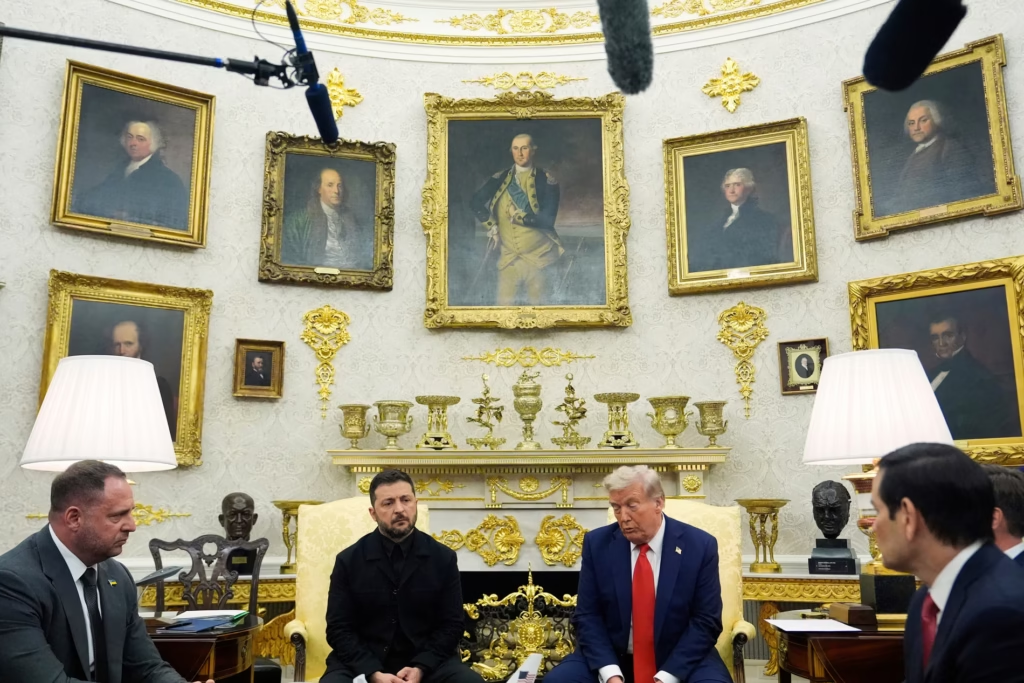Donald Trump’s Oval Office has undergone a dramatic transformation under his leadership. In just seven months, the president has added a distinctive golden touch to the room, leaving it unrecognizable to many. The changes reflect Trump’s background as a real estate developer and hotelier, as he applies his signature style to the nation’s most famous office.
Trump described the renovations as giving the room “a little life” during a March tour. He explained that achieving the right gold effect was challenging, but that did not slow his efforts. Over the months, the Oval Office has seen gold trim added to the ceiling, door frames, and fireplace. Even sculpted cherubim inside the door frames have been painted gold.
The number of gold items across the room has grown significantly. Trophies, vases, and even coasters engraved with Trump’s name now fill the space. A White House spokesperson confirmed that all gold decorations were paid for personally by the president.
The office also displays more paintings than ever before. Trump has added nearly 20 images of former presidents, far more than his predecessors. Joe Biden had six paintings on the walls, while Barack Obama displayed only two. Additional artwork includes pictures of the Trump family, a copy of the Declaration of Independence, and gifts from visitors, such as the FIFA Club World Cup trophy.
Every addition to the room has been directed by Trump, according to White House aides. To assist with the project, he reportedly called in a personal expert known as his “gold guy.” John Icart, a 70-year-old cabinet maker from Florida, flew to Washington on Air Force One to bring the gold flourishes he had previously installed at Trump’s Palm Beach mansion, Mar-a-Lago. The gilded carvings in the office led White House press secretary Karoline Leavitt to describe it as a “golden office for the golden age.”
However, not everyone shares the same admiration. Critics have expressed concern over the extravagant decor. Musician Jack White described the space as “vulgar” and compared it to a professional wrestler’s dressing room. Some argue that the overwhelming use of gold clashes with traditional presidential office aesthetics and detracts from its historical significance.
The Oval Office now serves as a bold symbol of Trump’s personal influence. From lavish gold accents to a significantly increased collection of presidential portraits, the space reflects his desire to leave a lasting mark. Supporters argue that the changes highlight a period of confidence and ambition, while critics suggest it prioritizes style over substance.
Trump’s approach to the Oval Office mirrors broader trends in his administration, where personal branding and distinctive style often intersect with governance. Every choice, from decorative items to paintings, appears carefully curated to reinforce his vision and legacy. The gold makeover is just one example of how his signature style extends beyond campaign slogans into the heart of American political power.
The transformation of the Oval Office raises questions about tradition and personal influence in government spaces. While the room’s gilded details draw attention, they also invite debate over how presidential spaces should balance personal flair with historical respect.
As Trump continues to host international leaders and key figures in his redesigned office, the golden decor is likely to remain a defining feature of his presidency. The room now tells a story not just of national power, but of a president’s unique style, blending luxury with politics.
Whether admired or criticized, the gold elements in Trump’s Oval Office are impossible to ignore. They reflect his hands-on approach, his personal tastes, and his desire to make a strong visual statement. The space has become both a symbol of his presidency and a topic of conversation around the world.

